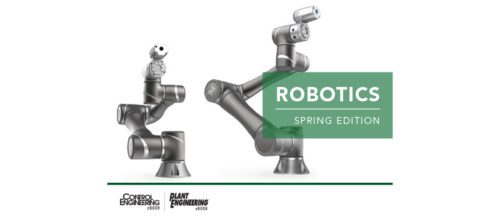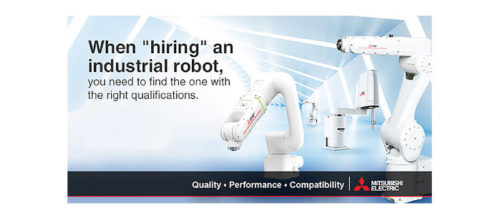Agricultural industry needs to become more vertical and automated
The agricultural industry is undergoing a transformation as demand increases. The industry will need to be more vertical and automated and robots will play a role in ensuring that it becomes efficient and less wasteful.
To meet rising food demands from a growing global population, over 250 million acres of arable land will be needed—about 20% more land than all of Brazil.
Alternatively, agricultural production will need to be more productive and more sustainable using present acreage. Meeting future needs requires investment in alternative practices such as urban and vertical farming, as well as existing indoor and covered methods.
Ray Kurzweil, Google’s director of engineering, said in an interview in The Times in 2013, "There will be a new vertical agriculture revolution, because right now we use up a third of the usable land of the world to produce food, which is very inefficient. Instead we will grow food in a computerized vertical factory building (which is a more efficient use of real estate) controlled by artificial intelligence, which recycles all of the nutrients so there’s no environmental impact at all."
Fully automated regional vertical farms for leafy greens and other commodity crops has long been a vision of the future. Capital costs and other vagaries have prevented such development to date, but lower costs for technology and automation, plus higher costs for labor, land, and other resources, are making Kurzweil’s predictions come true.
There are dozens of vertical farms around the world today and more being built. Spread, a Japanese factory farmer with a large facility near Kyoto that serves the two metropolitan areas of Kyoto and Osaka, is nearing completion of a fully automated 52,000-sq-ft facility where 98% of water will be recycled. Also, seeding, watering, applying fertilizer, and harvesting will all be automated—no earth; just shelves on top of shelves from floor to ceiling. They predict 30,000 heads of lettuce can be harvested and delivered daily throughout the year.
Propelling this indoor and vertical farming movement are three influential trends: the steady global movement toward precision farming, the availability of economical automation and robotics, and the growing labor shortage as the drivers of the movement.
Vertical farming
Food grown year-round in buildings near urban centers provides many advantages including being close to the point of consumption to reduce both distribution costs and spoilage. Outdoor farming is vulnerable to pests and disease, which in turn means intensive use of pesticides and herbicides causing problems with runoff and food safety. Vertical farms protect crops from weather and pests and reduce or eliminate the use of pesticides and herbicides. Hydroponic and aeroponic water methods save massive amounts of water compared to outdoor farming.
Consequently, as these farms become more prevalent, they could provide a major role for the agriculture (ag) industry to produce a wide range of commercial crops with major savings in space and water use. In the case of Spread, they are able to grow lettuce indoors using less than 1% of the water that California Central Valley growers use to grow the same product.
Agriculture accounts for around 70% of water used in the world today, according to the Organization for Economic Co-operation and Development (OECD). As population and climate change progress, food needs will grow, which means a more efficient use of water must happen. Vertical farms reduce water usage through recirculating hydroponics, evaporative cooling, control of in- and out-airflow, and other methods.
Greenhouse and wholesale nurseries
Greenhouse technology is ideal to protect plants from adverse climatic conditions, insects, and disease and to nurse, propagate, and grow plants to usable and/or harvestable size. Greenhouses can be framed or inflated structures covered with glass, transparent, or translucent material. Greenhouse yields are often 10-15% greater that outdoor yields, and consistency and quality tend to be greater. The growing season is also longer.
Similar to vertical farms, greenhouses have high up-front costs and operating expenses, and crop selection must not require pollination. Whether plants are grown in the field or indoors, nurseries transplant, graft, or germinate plants to create seedlings for resale. Their processes are quite complex on two levels:
- The technical aspects of growing plants require management of the environment, plant nutrition, propagation, transplanting, irrigation, and pest and disease control.
- The business aspects of managing production, labor, customers, distribution, and other activities associated with a business.
Many nurseries use automation and some level of robotics and this will continue to grow as agriculture becomes more vertical.
Frank Tobe is the owner and publisher of The Robot Report. After selling his business and retiring from 25-plus years in computer direct marketing and materials, consulting to the Democratic National Committee, as well as major presidential, senatorial, congressional, mayoral campaigns and initiatives all across the U.S., Canada and internationally, he has energetically pursued a new career in researching and investing in robotics. This article originally appeared on The Robot Report. The Robot Report is a CFE Media content partner. Edited by Brana Webb, production coordinator, CFE Media, bwebb@cfemedia.com.
ONLINE extra
See additional stories from The Robot Report linked below.
Original content can be found at www.therobotreport.com.
Do you have experience and expertise with the topics mentioned in this content? You should consider contributing to our CFE Media editorial team and getting the recognition you and your company deserve. Click here to start this process.



